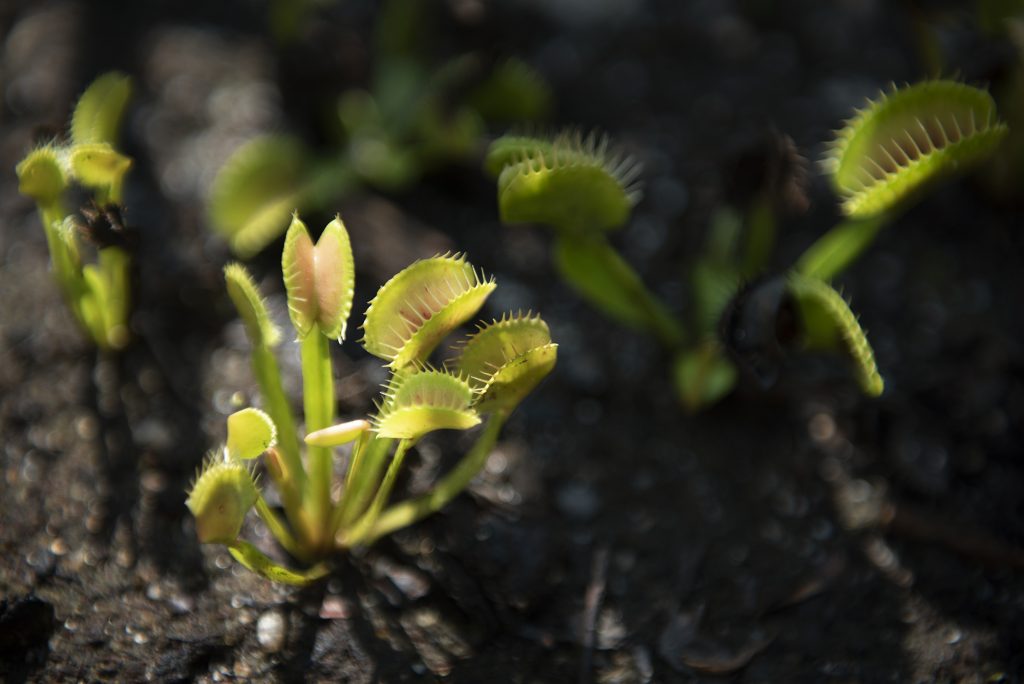Native only to a 90-mile inland radius around Wilmington, the Venus flytrap is a symbol of the Atlantic coastal plain’s unique ecology — and a contender for the federal endangered species list. As wild populations suffer due to poaching and habitat loss, UNC researchers work to preserve these carnivorous wonders through genetic testing and seed banking.
In the brush of North Carolina’s humid swamplands, a predator lies in wait. It’s perfectly still. It doesn’t breathe. It hasn’t had a meal in almost a month, but patience goes a long way out here.
Suddenly — its chance! A beetle, drawn to the hunter’s scent, comes to investigate. It casually alights on the open maw, and in its meandering the beetle trips one hair-like sensor, and then another. The hunter pounces.
In a tenth of a second, the Venus flytrap springs to life and its leafy jaw snaps shut, ensnaring the beetle in a prison of spiky hairs. It’s a grisly end for the insect. Over the next few days, digestive enzymes will turn it into an absorbable goo. But for the plant, it’s an opportunity to live a little longer in a habitat nearly barren of nutrients.
The Venus flytrap, and carnivorous plants like them, are oddities of the plant world. Carl Linnaeus, a famous 18th-century botanist who developed the modern method of assigning species scientific names, dubbed flytraps “against the order of nature as willed by God.” But Charles Darwin found delight in these strange creatures, calling them “one of the most wonderful plants in the world.”
Whether monstrous or wonderful, flytraps have existed on North Carolina’s coastal plain for millions of years. But they’re facing an uncertain future — between poaching and habitat loss, the amount in the wild has significantly decreased since 1958.
